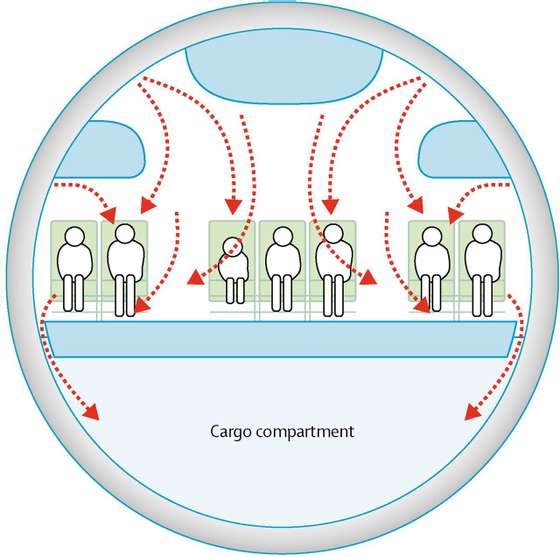Allergic reactions to peanut particles in airplane air are 10 to 100 times less common during flights than on the ground. The problem may be lack of cleaning.
The idea that peanut allergens spread through airplane ventilation systems has no scientific basis, confirms a study that considers that lack of cleaning is the real risk for allergy sufferers.
The conclusion, published in a study recently published in the journal Archives of Disease in Childhood, is the result of the analysis of all tests carried out by the United Kingdom Civil Aviation Authority, between 1980 and December 31, 2022.
In addition to nuts, Researchers from Imperial College London and Aviation Medical Consultancy analyzed the evidence of fish/shellfish smoke or exposure to wheat flour in the air breathed on airplanes, and the result is that no impact was detected in those who suffer from food allergies.
Among nuts, “peanut allergens can be detected at very low levels in the air when they are peeled, but the dust settles quickly and can only be detected very close to the nuts, which means that almost no dust circulates in the air“, highlighted the researchers.
Aircraft cabin ventilation systems are designed to circulate air throughout the aircraft and not just the passenger area, “minimizing the possibility of contamination generated by passengers spreading” in the space where they travel. the people.
At the same time, the air is completely renewed every 3-4 minutes during a flightcompared to 10 minutes in, for example, hospital rooms and classrooms.
What’s more, in modern large commercial airliners, “about half of the incoming air is fresh air that has passed through high-efficiency particulate air (HEPA) filters (the other 50% comes from outside the plane)” which They “effectively” remove dust. , fumes, potential microbial pathogens and simultaneously captures the vast majority of food particles in an aerosol,” the study says. For example, the scientific article continues, “the typical particle size of peanut dust ranges between 2 and 30 µm26, so HEPA units (which have a particle removal efficiency of 99-97% at 0-3 µm) would prevent recirculation of any peanut dust. .”

Air recirculation model in a commercial airplane published in the study led by Paul Turner and Nigel Dowdall
The real risk, according to the authors of the study, lies in the “Lack of airplane cleaning”especially those who fly on short routes, since traces of allergens remain dirty on surfaces (trays, video screens or seats).
“Surface debris represents the main risk, probably accentuated by the rapid route changes of many airlines,” they highlighted.
Toward Food proteins tend to be “sticky” and adhere to seating surfaces, seatback entertainment systems, and tray tables.which can cause a reaction in someone with a food allergy if they don’t wash their hands first when touching their mouth or face.
The best way to avoid this risk is to ensure adequate cleaning of the plane, but as far as each citizen is concerned, researchers recommend, especially those with food allergies, that before sitting in the seat they clean the surfaces that have been touched by others. . people from previous flights with disinfectant wipes.
For this reason, they advise companies that passengers with allergies board earlier, as the Department of Transportation already requires of airlines in the United States of America.
The authors also suggest that passengers at risk of dietary anaphylaxis carry epinephrine auto-injectors in their carry-on luggage, as they are not always included in the on-board medical kits nor are cabin crew authorized to use them.
“Toward Airlines should have clearer policies regarding food allergies.easily available on their websites, and disseminate them well among cabin and ground staff so that they can clarify doubts for passengers with allergies,” he also pointed out.
Data from the UK shows that food allergic reactions are 10 to 100 times less common during flights than on the ground.
Source: Observadora
